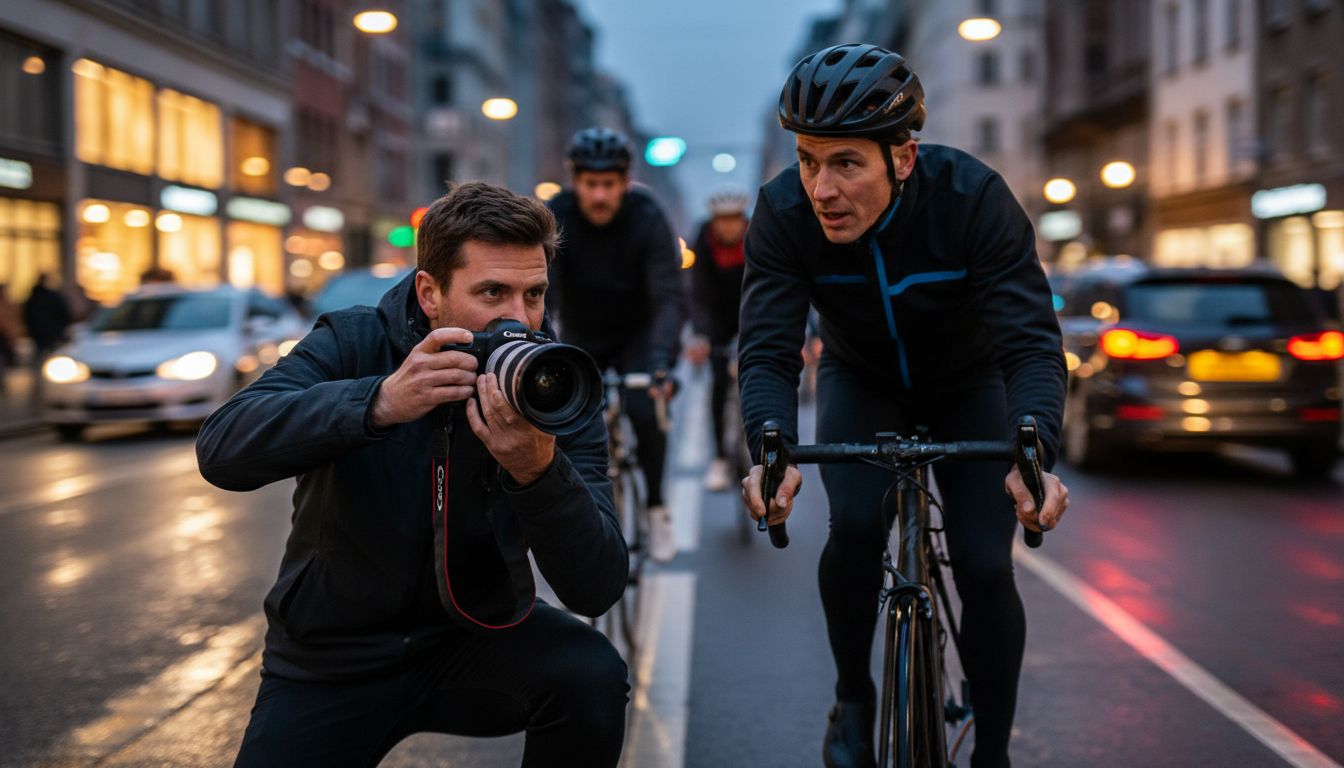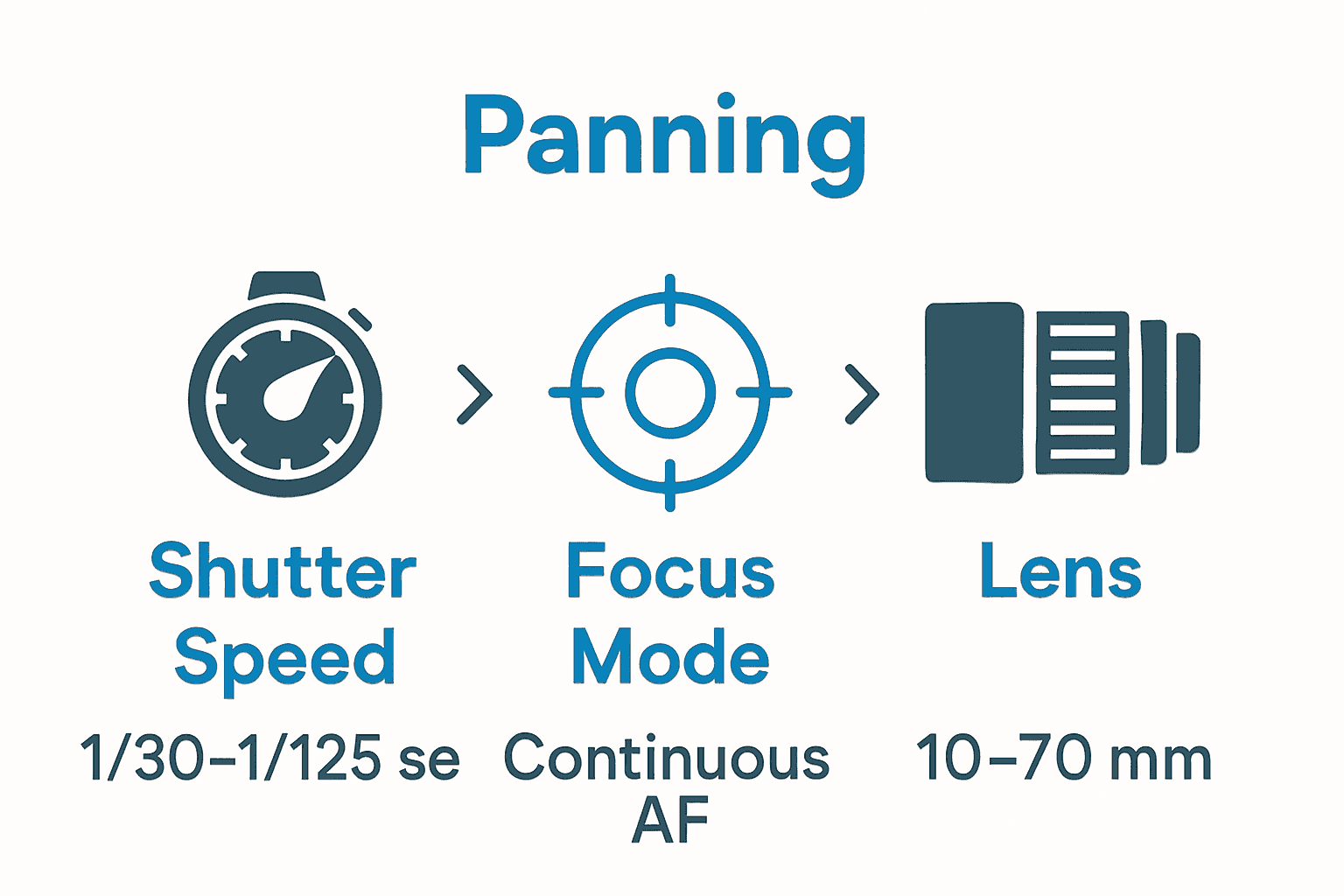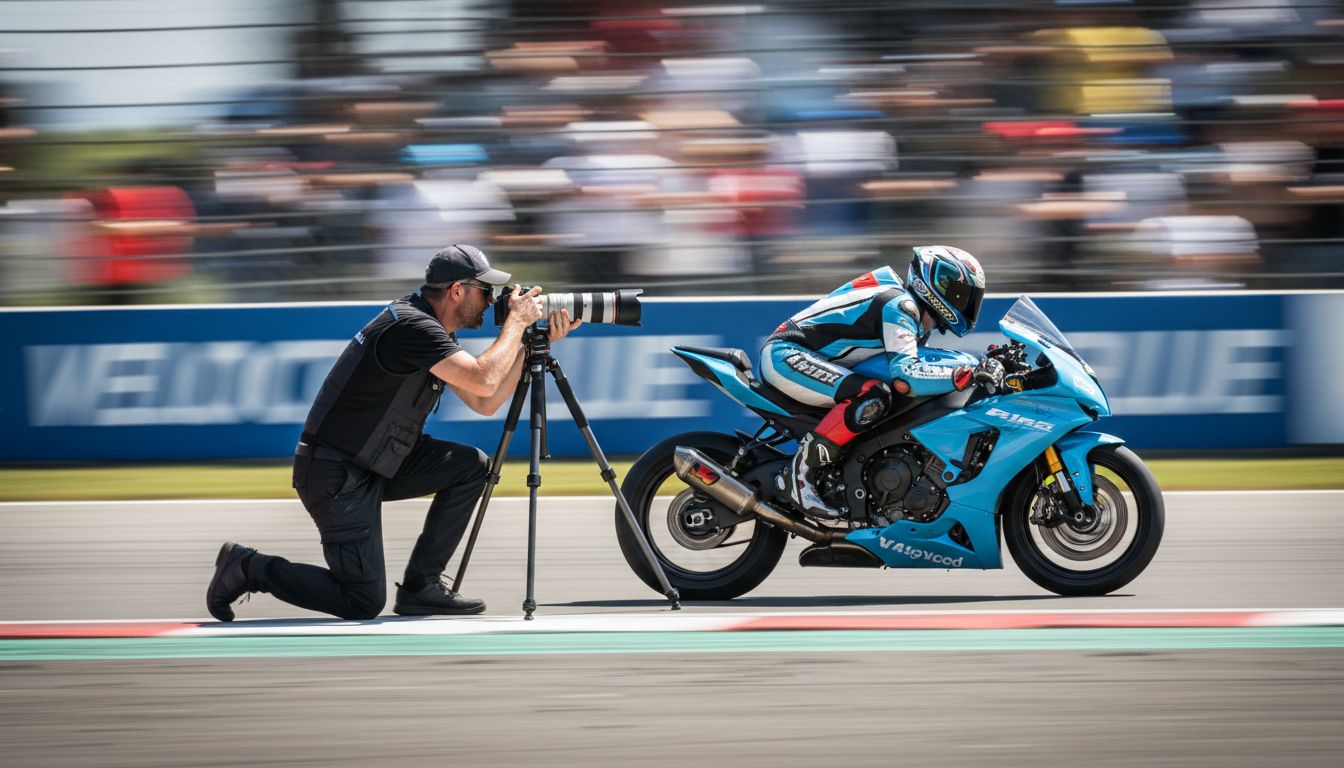Table of Contents
- Key Takeaways
- Defining Panning in Photography and Core Concepts
- Essential Camera Settings for Panning Success
- Choosing the Right Gear and Lenses
- Creative Uses and Subject Choices for Panning
- Common Panning Mistakes and How to Avoid Them
- Take Your Panning Skills to the Next Level with Expert Guidance
- Frequently Asked Questions
- Recommended
This blog post may contain affiliate links. As an Amazon Associate I earn from qualifying purchases.
Capturing the thrill of movement in a photograph offers unique creative rewards, especially for the american photographer eager to stand out. Nearly every striking sports or action shot you see relies on panning, a method that keeps subjects crisp while backgrounds streak with motion. Understanding this technique unlocks a new level of storytelling, turning routine motion into unforgettable images. This guide helps you master the key principles and skills for impressive panning in any action setting.
Key Takeaways
| Point | Details |
|---|---|
| Master the Technique | Panning requires synchronized camera movement with the subject to create dynamic images with a sharp subject and blurred background. Practicing smooth, fluid motion is essential for successful execution. |
| Optimize Camera Settings | Use shutter priority mode with a shutter speed between 1/30 and 1/125 seconds for the best results. Continuous autofocus is crucial for tracking moving subjects effectively. |
| Choose the Right Gear | Select wide-angle to midrange zoom lenses for their flexibility, and use stabilization tools like tripods with panning heads to enhance shot precision. |
| Avoid Common Mistakes | Inconsistent camera movement and incorrect shutter speed selection can ruin panning shots. Regular practice and understanding of technical settings help prevent these errors. |
Defining Panning in Photography and Core Concepts
Panning is a sophisticated photography technique that transforms ordinary motion shots into dynamic visual narratives. At its core, panning involves deliberately moving your camera in synchronized motion with a moving subject, creating an artistic effect that captures both movement and stillness simultaneously.
The fundamental goal of panning is to produce an image where your primary subject remains sharp while the background becomes a deliberately blurred motion streaks. This technique works by tracking a moving object horizontally or vertically, matching its speed and direction precisely. Photographers use panning to convey a sense of speed, motion, and energy that static images cannot capture. Imagine a racing car zooming across a track – through panning, you can make the car look crisp while the surrounding landscape blurs into dramatic speed lines.
To successfully execute a pan shot, photographers must master a few critical skills. First, you’ll need to select a slower shutter speed that allows background movement to blur. Second, you must smoothly follow your subject’s trajectory, keeping your camera movement consistent and fluid. The technique requires practice and precision – too slow, and your subject becomes blurry; too fast, and you lose the dynamic motion effect. The Basics Ideas Of Photography can provide additional context for understanding camera movement techniques like panning.
Panning works exceptionally well with subjects moving in predictable, linear paths. Sports photography, automotive racing, wildlife tracking, and urban street scenes are perfect scenarios for implementing this technique. By understanding and practicing panning, photographers can transform ordinary motion into extraordinary visual storytelling, revealing the poetry of movement through a single, strategically captured frame.

Essential Camera Settings for Panning Success
Successful panning requires strategic camera settings that balance technical precision with creative vision. Shutter priority mode becomes your primary tool, allowing you to control the most critical element of panning photography – the shutter speed that captures motion.
Most professional photographers recommend starting with a shutter speed range between 1/30 and 1/125 seconds. These slower speeds create the signature motion blur effect while keeping your subject sharp. Lower speeds like 1/30 produce more dramatic blur, while 1/125 provides a crisper result with subtle motion lines. Your ISO settings should remain flexible – many photographers prefer automatic ISO to maintain image quality across changing light conditions. The Beginner’s No-Fear Guide to Basic Camera Settings can help you understand these fundamental camera controls.
Autofocus becomes crucial in panning scenarios. Select continuous autofocus (often labeled as AI Servo or AF-C) to help your camera track moving subjects smoothly. This mode continuously readjusts focus, preventing blurry images when your subject is in constant motion. Additionally, choose a focus point near the center of your frame to maximize tracking accuracy. Positioning yourself where the subject’s path is predictable will significantly improve your success rate.

Practical preparation matters as much as technical settings. Before attempting complex panning shots, practice tracking moving subjects smoothly. Start with slower-moving objects like cyclists or joggers, gradually working up to faster subjects like racing cars or athletes. Maintain a stable stance, pivot from your waist, and move your camera in one fluid motion matching the subject’s speed. Experiment with different shutter speeds and practice consistently – the magic of panning lies in the seamless integration of technical skill and creative vision.
Choosing the Right Gear and Lenses
Mastering panning photography requires thoughtful gear selection that supports smooth motion tracking and creative expression. Camera stability becomes a critical factor, with specialized equipment making the difference between amateur and professional results.
Lens selection plays a pivotal role in successful panning shots. Professional photographers typically recommend wide-angle to midrange zoom lenses between 10-70mm, which provide remarkable flexibility for framing moving subjects. These versatile lenses allow quick composition adjustments and effective subject tracking. How to Select Camera Gear for Stunning Photos offers deeper insights into choosing the right photography equipment for dynamic shooting scenarios.
Stabilization tools are essential for consistent panning performance. A robust tripod with a specialized panning head can dramatically improve your shot precision, reducing unwanted camera shake during motion tracking. Look for tripods with smooth horizontal movement and quick-release mechanisms that enable rapid reposition. Additionally, consider investing in a comfortable camera strap to minimize fatigue during extended shooting sessions – this seemingly small detail can significantly impact your ability to maintain smooth, controlled camera movements.
Beyond hardware, your physical technique matters immensely. Practice maintaining a stable stance, pivoting from your waist, and moving your camera in synchronized motion with your subject. Experiment with different gear configurations and find a setup that feels natural and responsive. Remember that great panning shots emerge from a harmonious blend of technical equipment, practiced skill, and creative vision.
Creative Uses and Subject Choices for Panning
Panning photography opens a world of creative possibilities, transforming ordinary motion into extraordinary visual narratives. Dynamic subjects become the canvas for capturing movement, energy, and emotion through a single, strategically crafted image.
Athletic events and motorsports provide prime opportunities for panning techniques. Cyclists racing along winding roads, runners sprinting across finish lines, and motorcycles leaning into sharp turns become perfect subjects for showcasing motion. These scenarios allow photographers to highlight the raw intensity of human and mechanical movement. Action Photography Techniques Guide for Perfect Motion Shots can help you further refine your approach to capturing dynamic scenes.
Beyond traditional sports and vehicle photography, panning offers unique creative applications. Nighttime urban environments become playgrounds for experimental light trail photography, where moving vehicles transform into streaks of color and energy. Wildlife photographers can capture the graceful movement of animals in their natural habitats, from galloping horses to soaring birds. Street photographers might use panning to convey the bustling energy of city life, creating images that pulse with urban rhythm and momentum.
Successful panning requires more than technical skill – it demands artistic vision and emotional intuition. Look for subjects with predictable, linear movements and backgrounds that will create compelling motion blur. Experiment with different speeds, angles, and subject types. Remember that each panning shot tells a story of movement, inviting viewers to feel the dynamism and energy captured in a single, frozen moment.
Common Panning Mistakes and How to Avoid Them
Panning photography might seem straightforward, but numerous subtle errors can transform a potentially stunning shot into a blurry disappointment. Technical precision and practiced technique separate successful panning images from amateur attempts.
The most common mistake is inconsistent camera movement. Photographers often jerk or wobble during the pan, creating uneven motion blur that destroys the image’s dynamic quality. Developing a smooth, fluid motion requires dedicated practice – imagine your body as a human tripod, rotating from the waist with controlled, deliberate movement. 10 Common Photography Mistakes and How to Avoid Them can provide additional insights into technical photography challenges.
Another critical error involves incorrect shutter speed selection. Choosing a speed too slow results in an entirely blurry image, while a speed too fast prevents the desired motion effect. Beginners should experiment within the 1/30 to 1/125 second range, understanding that each subject’s speed requires nuanced adjustment. Pay attention to your background composition – a cluttered or busy background can diminish the panning effect, making your image look accidentally out of focus rather than intentionally artistic.
Practical preparation is your greatest defense against panning mistakes. Before important shoots, practice tracking moving subjects in a low-pressure environment. Start with slower objects like cyclists or joggers, gradually increasing difficulty. Watch your stance, maintain a consistent pivot point, and keep your movements smooth and controlled. Remember that mastering panning is a skill developed through patient practice, not instant perfection.
Take Your Panning Skills to the Next Level with Expert Guidance
Mastering panning photography means overcoming the challenge of balancing sharp focus and dynamic motion blur. If you struggle with selecting the right shutter speed, maintaining smooth camera movement, or choosing the perfect gear, you are not alone. This article breaks down critical concepts like shutter priority mode, continuous autofocus, and ideal equipment that can make all the difference. Embrace this opportunity to transform your motion shots into striking visual stories that truly capture speed and energy.

Ready to refine your technique and gain confidence behind the camera? Explore practical tutorials and step-by-step advice on The Beginner’s No-Fear Guide to Basic Camera Settings and discover how to select gear that complements your style in How to Select Camera Gear for Stunning Photos. Visit Amateur Photographer Guide now to unlock a treasure trove of tips that will help you master panning and elevate your photography journey today.
Frequently Asked Questions
What is panning in photography?
Panning is a photography technique that involves moving the camera in sync with a moving subject, creating a sharp image of the subject while blurring the background to convey motion and speed.
What camera settings are ideal for panning shots?
For effective panning, use shutter priority mode with a shutter speed between 1/30 and 1/125 seconds. This allows for motion blur while keeping the subject in focus. Continuous autofocus mode is also recommended to track moving subjects.
How do I practice panning technique?
Start by tracking slower-moving subjects like cyclists or joggers in a low-pressure environment. Maintain a stable stance, pivot from your waist, and move your camera fluidly to match the subject’s speed.
What types of subjects are best suited for panning photography?
Dynamic subjects such as athletes, racing cars, wildlife in motion, and urban scenes with moving vehicles work well for panning. These subjects typically have predictable, linear movements that enhance the panning effect.
Recommended
- What is Perspective in Photography? Understanding Its Impact – Amateur Photographer Guide
- 7 Essential Steps for a Landscape Photography Checklist – Amateur Photographer Guide
- What Is Portrait Mode? Complete Photography Guide – Amateur Photographer Guide
- Mastering Landscape Photography Workflow: Complete Step Guide – Amateur Photographer Guide

